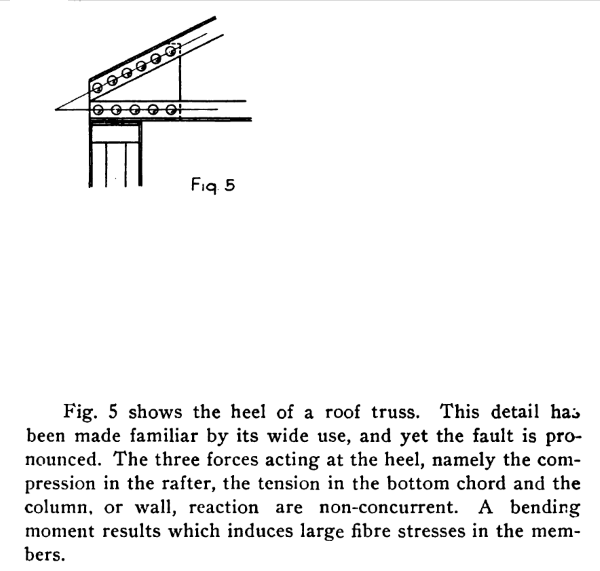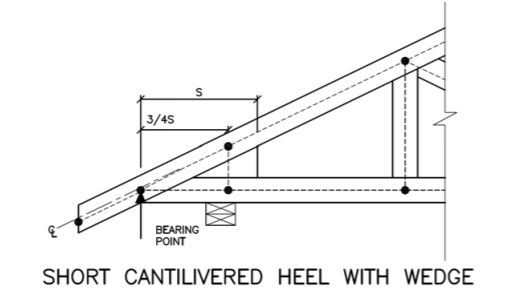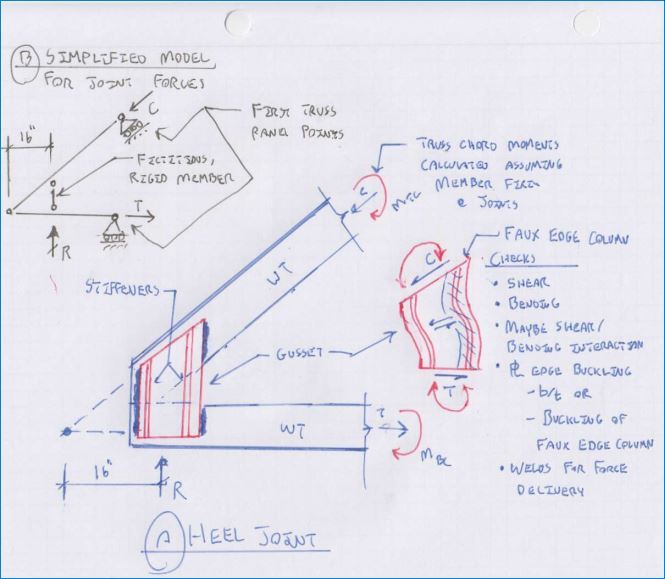rjmorton42
Structural
I am designing the connections for a simply-supported steel roof truss. The EOR specified the geometry, member sizes, and member axial forces. It is a Pratt truss with a configuration similar to this:
._______
/|\|\|/|/|\
The chords are WT sections and the webs are double angles that are lapped and welded to stems of the WT's. My question is at the bearing location at the ends of the truss (it bears on WF steel beams). The architect and EOR require a specific heel depth over the centerline of the beam, so the work point where the neutral axes of the WT chords intersect is ~16" outside of the centerline of the beam support.
My plan is to put a trapezoidal-shaped gusset plate welded to each side of the WT stems at the supports, and to add stiffeners directly over the support as needed. My questions is how to evaluate the gusset plates with the internal moment that results from this eccentric work point configuration. I have checked multiple resources, including all the AISC design guides, text books, and even Blodgett, and I can't seem to find a good discussion or example of how to look at this situation, but I know I am not the first person to run into this since I see it all the time in old buildings. Any guidance would be greatly appreciated.
Thanks!
._______
/|\|\|/|/|\
The chords are WT sections and the webs are double angles that are lapped and welded to stems of the WT's. My question is at the bearing location at the ends of the truss (it bears on WF steel beams). The architect and EOR require a specific heel depth over the centerline of the beam, so the work point where the neutral axes of the WT chords intersect is ~16" outside of the centerline of the beam support.
My plan is to put a trapezoidal-shaped gusset plate welded to each side of the WT stems at the supports, and to add stiffeners directly over the support as needed. My questions is how to evaluate the gusset plates with the internal moment that results from this eccentric work point configuration. I have checked multiple resources, including all the AISC design guides, text books, and even Blodgett, and I can't seem to find a good discussion or example of how to look at this situation, but I know I am not the first person to run into this since I see it all the time in old buildings. Any guidance would be greatly appreciated.
Thanks!




![[idea] [idea] [idea]](/data/assets/smilies/idea.gif)
![[r2d2] [r2d2] [r2d2]](/data/assets/smilies/r2d2.gif)

